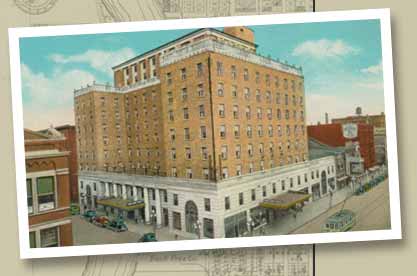“There were a lot of aspects of everyday life in the 1920s that we face as challenges now,” Roznowski said. “There was a balance between the rural and the urban in Terre Haute, the traditional and the cutting edge of technology.”
 “We always make the assumption that progress
is being made as time passes. Terre Haute is case where a city actually
declined over the course of the 20th century. It provides a window
on America and American life that is very fascinating once you explore
it.”
“We always make the assumption that progress
is being made as time passes. Terre Haute is case where a city actually
declined over the course of the 20th century. It provides a window
on America and American life that is very fascinating once you explore
it.”
Schwibs said the surface story of the documentary is a journey through Terre Haute but people who don’t live in the western Indiana city will still find it interested. “The real story is a journey through the past, finding interesting things. That was the driving force. We would try to look at everyday items and find their significance for that time. Usually people think of history as something big—such as important people or significant events. But this program is about the history of everyday life and the things that shape families and the people around them. Although it’s about Terre Haute, it’s also about the importance of everyday history.”
Schwibs said they tried to provide an open-ended look at history, rather than define what Terre Haute was or is. “You often don’t know the significance of something when you live it and see it all the time. Sometimes it takes a little distance to see the meaning. What we found is that the common elements of life can tell us just as much about history as the big things. Anyone, in any time, in any decade can look at the same thing and it differently. We’re opening the box for people to look in to.”

